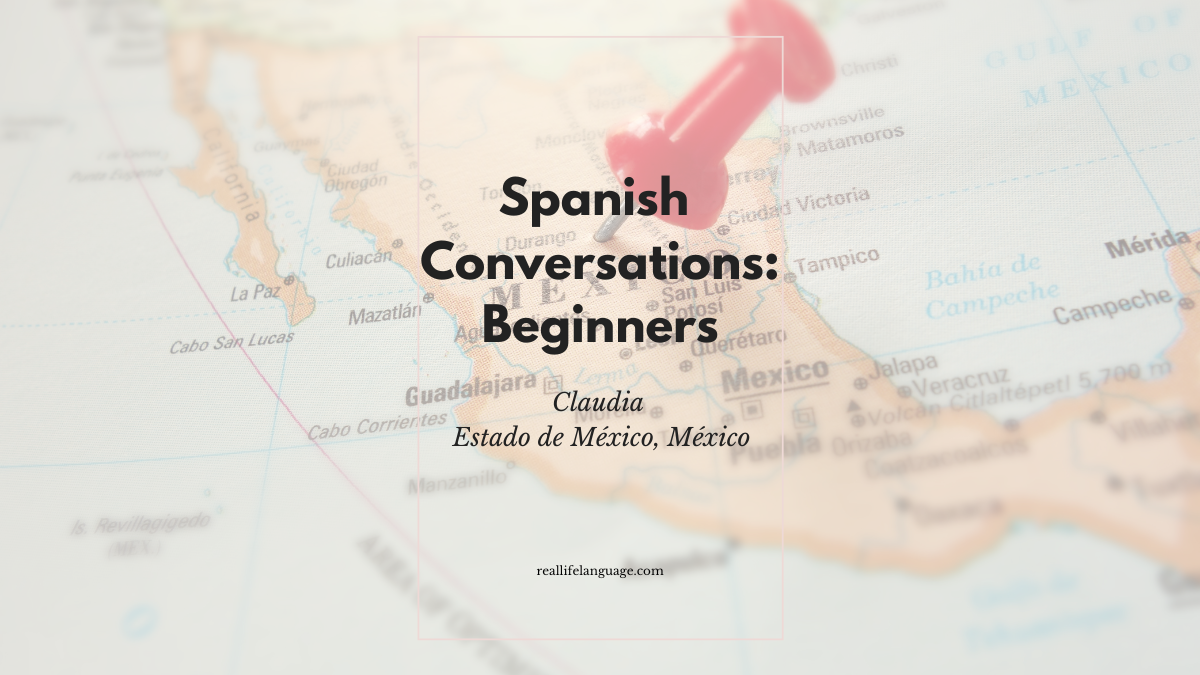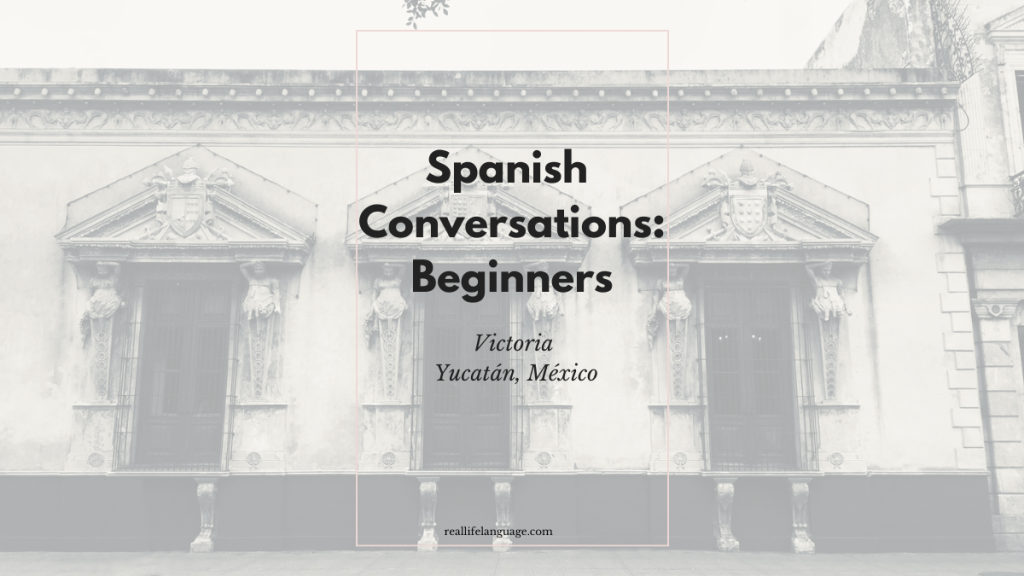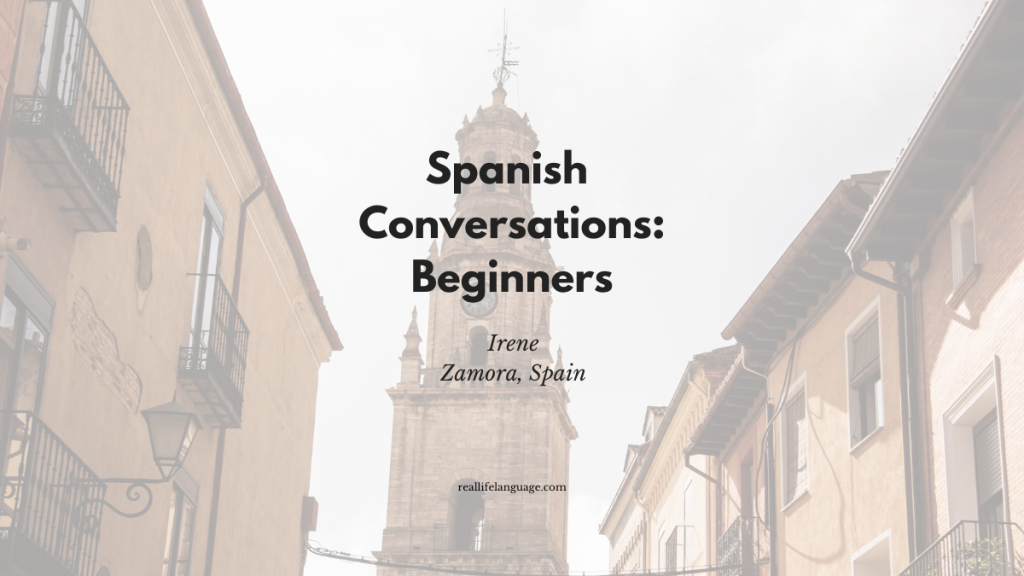 This article is based on an everyday Spanish conversation video and is designed to help learners learn Spanish through natural, practical examples. The conversation follows Claudia, who describes her daily routine, classes, shopping habits, sports, favourite foods, and holiday plans. Use the vocabulary, model sentences and practice tips below to improve listening, speaking and everyday conversation skills.
This article is based on an everyday Spanish conversation video and is designed to help learners learn Spanish through natural, practical examples. The conversation follows Claudia, who describes her daily routine, classes, shopping habits, sports, favourite foods, and holiday plans. Use the vocabulary, model sentences and practice tips below to improve listening, speaking and everyday conversation skills.
What the conversation covers
- Daily routine and class schedule
- Shopping and markets in the city
- Sports, hobbies and favourite media
- Typical Mexican foods and local dishes
- House and city descriptions
- Vacation habits and distances to the beach
Daily routine: vocabulary and sample sentences
Claudia describes a busy day with classes in the morning and evening. This section highlights common verbs and time expressions learners hear often.
- levantarse — to get up: Me levanto a las siete. (I get up at seven.)
- ducharse — to take a shower: Me baño a las siete y media. / Me ducho a las siete treinta.
- desayunar — to have breakfast: Desayuno una manzana antes de las ocho.
- empezar / terminar — to start / to finish: Las clases empiezan a las ocho y terminan a las dos.
- ir a dormir — to go to sleep: Voy a dormir alrededor de las ocho o nueve.
Useful time expressions: por la mañana, por la tarde, por la noche, a las ocho, aproximadamente, dependiendo.
Classes and scheduling language
Claudia studies a second career and often has long days. Notice how to talk about repeated class schedules:
- Las clases son de las 8 a las 14 (8 AM to 2 PM).
- Después, hay otra clase desde las 3 hasta las 5 (from 3 to 5).
- Cuando el horario cambia, se puede decir: Depende o más tarde.
Shopping: places and phrases
Shopping vocabulary in the video reflects common Mexican options: centros comerciales, supermercados, and mercados. Practice these words and phrases:
- centro comercial — shopping mall (e.g., “Galleries”, “Metepec”, “Times Square” as local mall names)
- supermercado — supermarket (Walmart, Soriana)
- mercado — market (often open specific days)
- Common phrase: Voy al supermercado por la comida. (I go to the supermarket for food.)
- To ask where someone shops: ¿Dónde te gusta ir de compras?
Sports and hobbies: talking about activities
Claudia likes swimming and mentions that football (soccer) is the most popular sport. Useful verbs and expressions:
- nadar — to swim: Me gusta nadar.
- practicar deporte — to play a sport: Practico natación.
- fútbol — football/soccer: El fútbol es el deporte más popular.
- Hobbies: ver series, ir al parque a correr, ir a un café, ir de compras.
Movies, series and media language
Claudia mentions favourites like the Harry Potter saga and Tim Burton’s movies. Phrases for talking about films and series:
- Mi película favorita es…
- Me gusta ver series / soy fan de las series
- To describe feelings: Me encanta, Me gusta mucho, No me gusta.
Food: typical dishes and how to describe them
Food is a central part of the conversation. Claudia names dishes and describes typical features of Mexican cuisine.
- enchiladas suizas — enchiladas with a creamy sauce (a common favourite)
- chiles en nogada — stuffed peppers in walnut sauce (a regional, traditional dish)
- tortilla — a staple in many meals
- Typical food characteristics: often picante (spicy), sometimes grasiento (fatty), and tortillas are very common.
Practice sentence: Mi comida favorita son las enchiladas suizas y también me gusta el sushi.
House, city and vacation vocabulary
Claudia describes a two-storey house and contrasts living in a big city with a small neighbourhood. She also talks about holiday destinations like Puerto Vallarta and Guadalajara.
- casa de dos pisos — two-storey house
- barrio / vecindario — neighbourhood
- pueblo mágico — touristy, charming small town
- fui de vacaciones a Puerto Vallarta — I went on holiday to Puerto Vallarta
- la playa queda a tres o cuatro horas — the beach is 3–4 hours away
Practical practice: questions and short answers
Use these questions to practice speaking or writing. Try answering in full sentences.
- ¿A qué hora te levantas? — Me levanto a las ______.
- ¿Qué haces los fines de semana? — Los fines de semana ______.
- ¿Dónde te gusta ir de compras? — Me gusta ir a ______.
- ¿Practicas algún deporte? — Sí, practico ______ / No, no practico deportes.
- ¿Cuál es tu comida favorita? — Mi comida favorita es ______.
Grammar and pronunciation tips
Short reminders that appeared in the conversation and help learners:
- Use the present tense for routines: estudio, trabajo, voy.
- Use the preterite to talk about completed past actions: fui (I went), fui de vacaciones.
- Time expressions: de 8 a 14, por la mañana, aproximadamente.
- Pronunciation tip: the letter g in gusta is soft before u — practise: me gusta, gusto.
Ways to use this conversation to learn Spanish
To get the most out of this everyday conversation and to learn Spanish effectively, try these activities:
- Listen and repeat: shadow Claudia’s sentences to practice rhythm and pronunciation.
- Write short answers to the practice questions above and compare with a tutor or language partner.
- Create your own version of the routine: write “Mi rutina” using the same verbs and time expressions.
- Memorise 5 food and 5 shopping vocabulary words from this article and use them in sentences.
Using authentic conversations like this one makes it easier to learn Spanish in a practical, enjoyable way. Try the suggested activities, practise regularly and use the sample sentences to build confidence in everyday situations.
Conclusion
Everyday conversations are a powerful tool to learn Spanish because they present real vocabulary, natural phrasing and useful cultural references. Review the phrases above, practise speaking about routines, shopping, sports and food, and revisit the dialogue often. This focused practice will help learners progress quickly.
100s of videos to learn Spanish:
https://real-life-language.kit.com/b1531a6404
Learn Spanish with Everyday Conversations: A Beginner Dialogue from Buenos Aires

